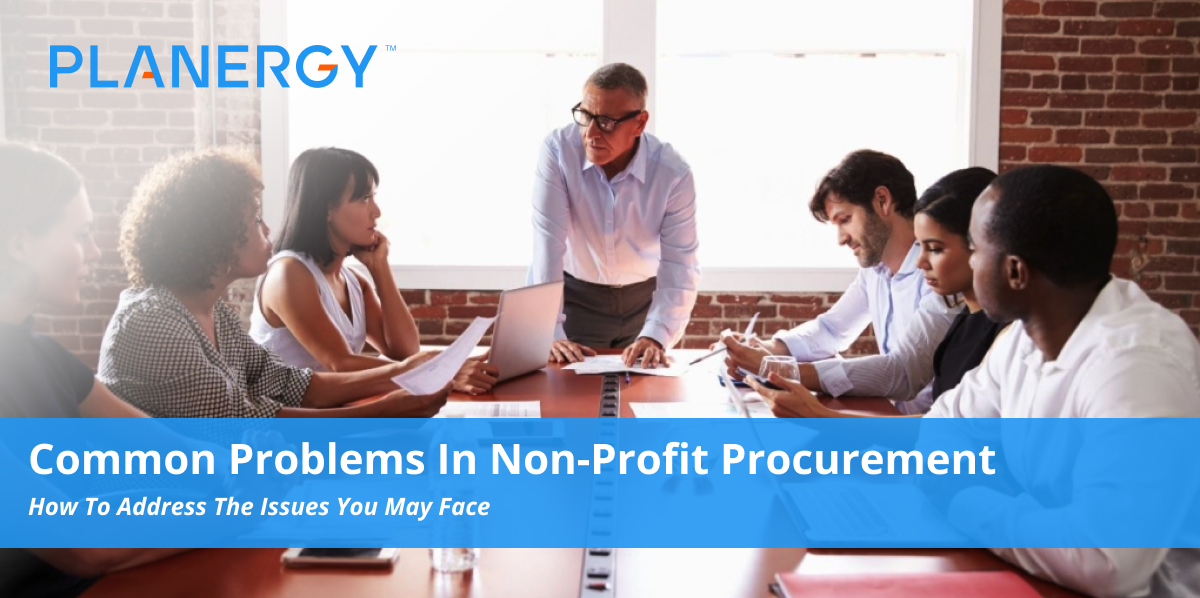The majority of what you’ll read about procurement is centered around businesses and other for-profit organizations. And while good procurement practices are essential for the success of any enterprise, that’s especially the case for non-profits.
Non-profit procurement policy is different in the sense that because they often rely on federal funding and grants, they have to adhere to various regulations and guidelines that govern them.
But, like commercial entities, they must make sure to spend the money wisely to ensure the organization grows.
These are the Common Problems in Non-Profit Procurement
Keeping up with Regulatory Changes
Many organizations that receive federal funding are familiar with the rules and regulations that come along with it.
But those rules and regulation often change, which means making changes to your processes to keep everything in regulatory compliance, according to the Office of Management and Budget’s (OMB) Uniform Grant Guidance.
That “government-wide framework for grants management” applies to any and all federal award made on or after December 26, 2014, and the part that applies to procurement went into effect as of January 1, 2018, and apply to any dates within your fiscal year after that point.
Under that regulation, you must formalize a procurement policy in writing.
In that policy, you must address the micro-purchase threshold, which is currently set at $3,500, per the FAR 48 CFR sections Subpart 2.101, unless your entity is a higher education institution or affiliate, or a non-profit research organization, where the micro-purchase threshold is $10,000 per the National Defense Authorization Act.
You must also address purchases above the micro-purchase threshold but beneath the simplified acquisition threshold of $150,000.
Purchases within this range must have a price analysis from a number of sources documented, as they are considered simple and informal. They do not require a formal solicitation process, but the policy should state how this is documented.
Your nonprofit procurement policy should also identify any purchases above the $150,000 threshold as purchases must follow a formalized solicitation and bid process.
If you use sole source procurement, you must provide justification documentation, because you’re expected to solicit quotes from multiple qualified sources before awarding any contract.
You must maintain procurement records to show the vendor and/or contract history for procurement, as well as justification for the work that needs to be done.
The documentation should also support why you chose the vendor you did, as you’re allowed to consider more than just the contract price.
Things such as contractor integrity and the record of past performance are acceptable considerations when it comes to potential vendors.
The policy must also address the acquisition of duplicate or unnecessary items as it is against procurement standards to use federal funds for that purpose, only specify brand-name products when absolutely necessary, and take steps to use women-owned and minority-owned businesses whenever possible.
It should also cover how organizational conflicts of interest are addressed.
If there is a conflict of interest at any point, such as working with a vendor operated by a family member, it generally means going back to the contractor selection process to choose another vendor, even if that vendor placed the lowest bid.
In addition to the Uniform Guidance standards, you must ensure you maintain compliance with federal law and any state statutes.
The best thing you can do here is to create a thorough procurement policy and review it often.
Keep an eye on any regulations that may change, and work to create a plan for compliance ahead of the final deadline.
While most of the law went into effect years ago, the one-year grace period for nonfederal entities to adopt the new procurement standards was later extended to two years to provide additional time.
If you work to maintain compliance all the time, you’ll be ahead of the game if and when there are additional regulations that you must address, allowing you to work out any kinks in your process adjustments before the established grace period ends.
Lack of Purchasing Power
Because non-profit organizations are often small operations, there is a distinct lack of purchasing power as compared to larger organizations.
Working with a limited number of vendors, or not having the ability to purchase certain goods or services in bulk to secure discounts can be detrimental.
To offset this, many may want to consider partnering with other non-profit organizations to form a group purchasing organization or GPO.
Together, everyone in the group has increased buying power, making it easier to negotiate discounts on various products and services including office supplies and equipment, accounting and legal services, health and other insurance for employees, fundraising and grant writing services, and so on.
Increased purchasing power helps the organization save money, which can be used in other areas or departments, especially if fundraising efforts are not going as well as projected.
Integrating Procurement with Other Systems
To keep everything running as smoothly as possible for the entire organization, it means integrating nonprofit procurement with all other systems so you can easily move from RFP to purchase order, all the way through receiving the goods and services and then paying for them.
Converting your non-profit organization to a procure-to-pay software can help ease the stress of the complex non-profit procurement process.
You’ll not only save money because your entire procurement department can run faster, but you’ll save time and ensure compliance because of access to better insight into where the money’s going and budget tracking, but improved vendor management and documentation for compliance purposes.




